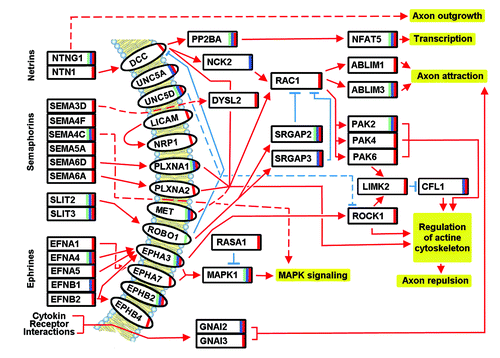Figures & data
Table 1. Common miRNAs (RefSeq ID) of dyslexia, dyspraxia, and SLI genes
Table 2. Axon guidance pathway modulated by the identified miRNAs
Figure 1. Targets of the axon guidance pathway, possibly modulated by miRNAs in dyslexia (green bar), dyspraxia (red bar), and SLI (blue bar). The interactions are based on hsa04360 KEGG pathway description (http://www.genome.jp/dbget-bin/www_bget?pathway+hsa04360) and literature (see section 5).

Figure 2. Targets of the axon guidance pathway likely altered in dyspraxia. The comparison of with denotes the possible importance of semaphorin signaling in the pathology of dyspraxia, while ephrin and netrin signaling are present too. As can be seen, the pathways lead to a favoring of axon repulsion through the PAK kinases and to axon attraction through RAC1; therefore, possible loss of balance between axon repulsion and axon attraction could be the result of deregulated expression of the semaphorin signaling.
